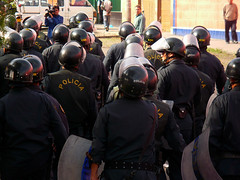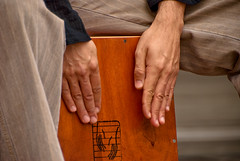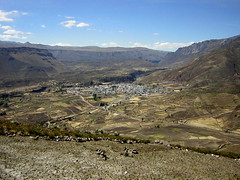Newly discovered Moche pyramid is “unusual”
A team of archaeologists who uncovered a 1,400 year old pyramid in Peru say that the finding is particularly unusual. The flat-topped pyramid, which was built by the Moche culture, was used for the living rather than just for the dead, and contains a wealth of artefacts, murals and human remains.
By Owen Jarus for The Independent
The pyramid was discovered at Huaca Colorada, which translates as ‘coloured hill’. Excavation leader Professor Edward Swenson, of the University of Toronto, describes how he suspected that the area may be archaeologically significant. “I knew it was more than a natural hill – this was modified.”
Swenson’s hunch paid off. With the pyramid so far only partially uncovered, archaeologists have already made remarkable discoveries. “Our biggest surprise was that at the top of this pyramid construction we found elite residences”, said Prof Swenson, who added that it is very unusual to find pyramids used in this way. The Moche are known to have used pyramids for burials and ritual activity rather than everyday living.
The living complex would have housed no more than 25 people, and was complete with patios, a kitchen, and stands for ‘paica’ – large vessels for storing water and corn beer. The team also identified a bin used to hold guinea pigs: “The preservation was so good that we actually came across guinea pig coprolites (faeces).”
Several murals covered the corridors at the pyramid’s summit. The best-preserved of these depicts a Moche warrior – who Swenson describes as looking “like a Smurf” – carrying a club. Other murals include a depiction of what appears to be a cactus with two mountain peaks and a rainbow, and a representation of two litter-bearers carrying a person.
Evidence of ritual sacrifice was also discovered at the site. The skeletons of three adolescent girls, and body parts belonging to four other individuals, were found on a platform at the top of the pyramid. The girls were buried with beads around their neck and their feet were close together, suggesting that they had been bound. Charring on the girls’ knees indicate that their bodies were subject to “ritualistic burning.”









